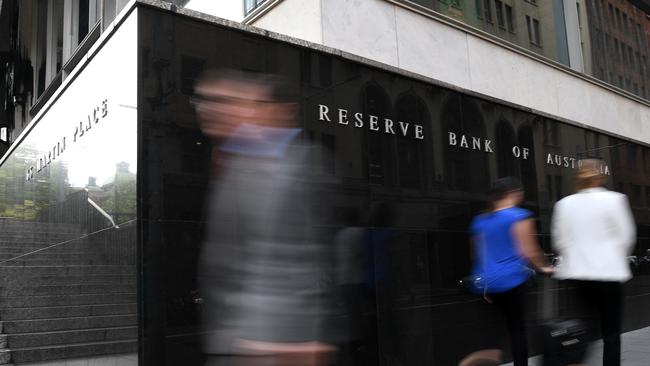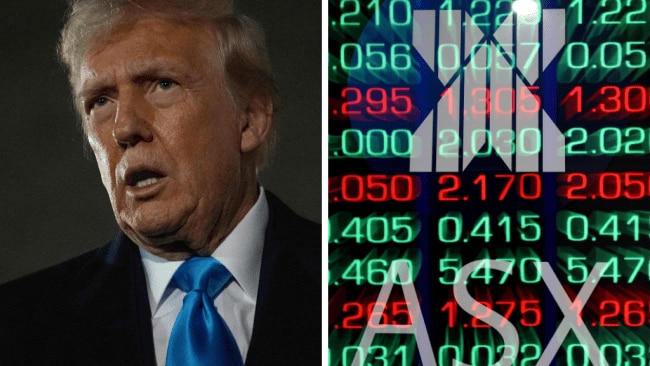
While corporate Australia is hogging the headlines with results season, an almighty battle is taking place in the shadows between the Reserve Bank and bond traders.
And it was on Thursday that the central bank came out swinging to defend its three-year bond yield target and prevent a disorderly rise in long-term yields.
But even with billions spent buying bonds, it could be a hollow victory with strategists arguing “yield-curve control” is on the way out.
As a flood of results from corporate Australia showed a hint of confidence about the outlook amid the local rollout of the coronavirus vaccination and plunging rates of infection and death in the US, the RBA was determined to prevent all this economic optimism from driving bond yields sharply higher.
The market was primed for a battle after the RBA resumed the defence of its three-year bond target, set at a record low of 0.1 per cent since November, with a $1bn purchase on Monday – its first such defence in almost three months.
Its intervention that day didn’t stop the three-year bond yield hitting a 2½-month high of 0.14 per cent and ending the day at 0.127 per cent.
Confronted with rising bond yields globally as the benchmark 10-year Treasury bond yield hit a 12-month high of 1.433 per cent after recent strong US economic data and dovish comments from Fed chairman Jerome Powell this week, the RBA walked into a storm on Thursday as the New Zealand 10-year bond yields surged 18.4 basis points to 1.868 per cent and the NZ money market priced in a full 25 basis point increase in the RBNZ’s cash rate by 2022.
What was the cause?
The cause of the bond market selloff which flowed through to Australia was a statement from NZ finance minister Grant Robertson, saying that the RBNZ would now have to take account of house prices.
Under changes to the remit for the RBNZ monetary policy committee, NZ’s Arden government extended its economic objective by noting that “an effective functioning housing market is a critical component of a sustainable and inclusive economy, and promotes the maintenance of a sound and efficient financial system”.
The RBNZ must now “assess the effect of its monetary policy decisions on the government’s policy” on housing, defined as “to support more sustainable house prices, including by dampening investor demand for existing housing stock which would improve affordability for first home buyers”.
Combined with a jump in US 10-year bond yields, the ensuing surge in NZ bonds yields resulted in the equivalent Australian yield surging 12 basis points at 1.73 per cent – the highest daily close since May 2019 – even though such a policy is not being contemplated by the Australian government.
So the bond market sold off despite the RBA’s announcement of a $2bn purchase of November 2028 to November 2031 bonds as part of its quantitative easing program, which targets $5bn of longer-dated bond purchases per month, and a record $3bn of April 2023 and April 2024 bonds as part of its “yield curve control” defence of the 0.1 per cent target for the three-year bond.
The selloff at the long-end was also magnified by a 3 per cent rise in domestic capital expenditure data for the December quarter – three-times more than the market estimate of 1 per cent.
The three-year yield initially spiked 2.7 basis points to 0.141 per cent after the RBA’s 11.15am announcement of its bond-buying intentions, matching a 2½-year high that it hit on Monday.
It later fell sharply to close at 0.124 per cent, albeit still a long way above the RBA’s target.
Strategists said the RBA’s bond buys related to the three-year bond target would have had more impact if they had included November 2024 bonds which were trading around 22 basis points, and it would have demonstrated the RBA’s commitment to “rolling forward” the yield curve control policy.
Expectations
“The market had expected, or hoped, that the RBA would enter the market in yield curve control with a purchase of November 2024 bonds,” CBA head of fixed income strategy Martin Whetton said. “They didn’t do that – even with their super-sized buying – so yields pushed sharply higher.
“We have believed for some time that the yield curve control program would be dropped at the August board meeting.”
The RBA will stop “rolling forward” its yield-curve control program around mid-year, making the April 2024 bond the end point for its 0.10 per cent target, according to Goldman Sachs.
“We expect the RBA to pair the yield-curve control announcement with a further extension of its QE program into 2022 – ensuring the yield-curve control decision is not viewed as a material hawkish pivot and capping potential upside pressure on the Australian dollar,” Goldman Sachs Australia chief economist, Andrew Boak said.
Mr Boak said he saw a “strong rationale” for the RBA to cease rolling forward the three-year yield-curve control target around mid-year, thereby starting the “exit” of yield-curve control – to “resolve the growing tension between the current commitment to keep three-year yields at 0.1 per cent while simultaneously guiding that the cash rate may rise in 2024”.
With the RBA’s new conventional QE program viewed as an “insurance policy” against a sharp rise in bond yields, unwinding yield-curve control’s “extreme version” of forward guidance would also “provide the RBA greater flexibility to respond to potential upside surprises to the outlook over the medium term”.
But Mr Boak said that navigating the exit of yield-curve control was “complicated and risky from the perspective of central bank communication and credibility, and delaying the decision to July will provide valuable time to assess Australia’s vaccine rollout and how the economy is adjusting to the withdrawal of fiscal stimulus”.
Mr Boak argues the RBA’s yield-curve control to have been “operationally successful in pinning rates to target, a useful tool to temporarily ‘insure’ RBA’s dovish forward guidance during the crisis, and helpful in partially insulating Australia from tightening global financial conditions”.
But he warned that there were “clear limits” to what yield-curve control could achieve.
“We do not find evidence that yield-curve control lowers the term structure of rates beyond the targeted tenor, can prevent a sharp steepening/‘kink’ in the yield curve, or weighs sufficiently on the Australian dollar when other central banks are aggressively expanding their balance sheets,” he said.
“In this latter respect, yield-curve control is no substitute for a standard QE program.”






